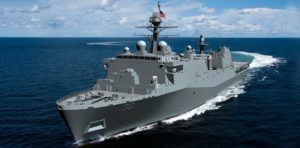
The Commandant of the Marine Corps on Thursday argued in favor of getting multi-year procurement authority to buy multiple San Antonio-class Flight II ships at once to maintain and improve the amphibious fleet. Speaking at the Amphibious Warship Industrial Base Coalition’s annual congressional forum on March 9, Gen. David Berger laid out how the Chinese military leadership decides to potentially invade Taiwan based on several factors, with a key one being U.S. forces in the region. He noted his job…

 By
By 











